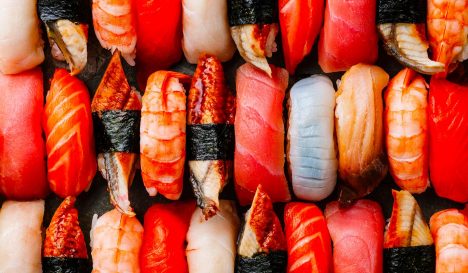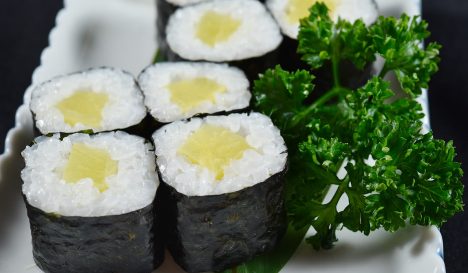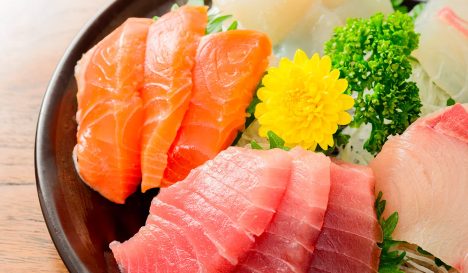Sushi
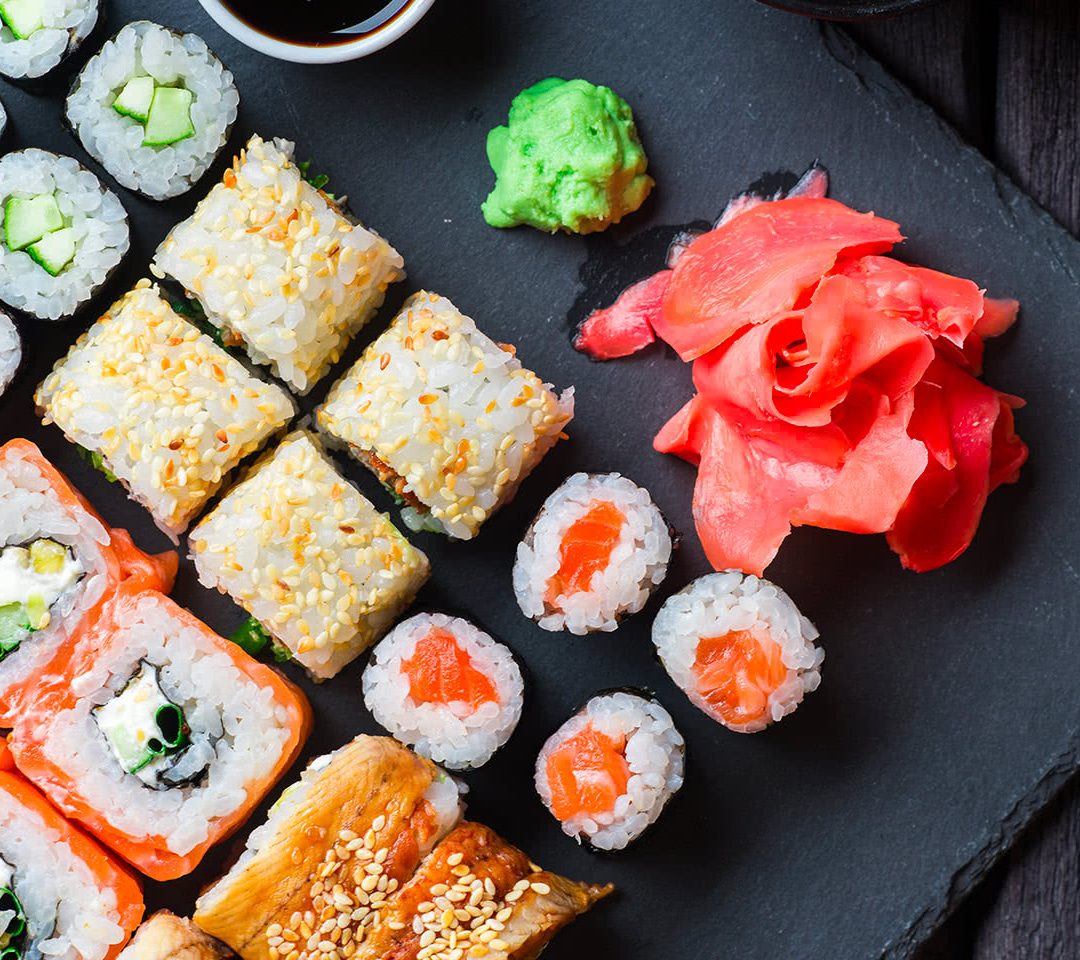
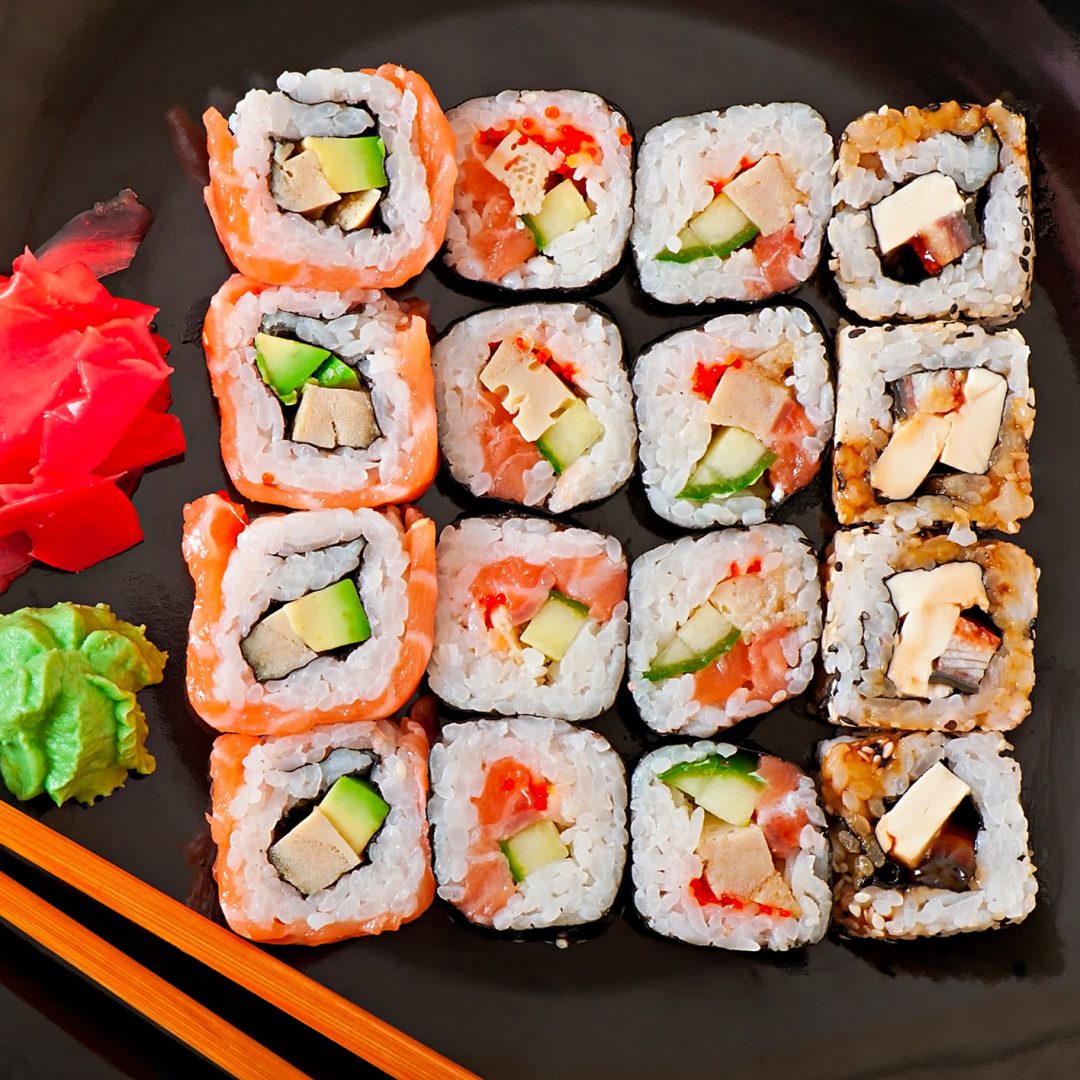
Sushi
-
Kitchen Japanese cuisine
-
Basis Rice
-
Dish type Main course
-
For who Small appetites
-
Spiciness pepper pepper pepper
What is sushi?
Sushi (pronounced ‘soe-sjie’) is the most famous dish in Japanese cuisine, consisting of a lukewarm serving of rice flavoured with sushi vinegar, with another ingredient such as fish or vegetables placed or rolled on top. Rolled sushi boasts a layer of nori (seaweed) on the outside.
The word sushi is an abbreviation of the word sumeshi and means vinegar (su) with rice (meshi). Without rice, there can be no sushi. Despite the differences between dishes, all sushi offerings have rice as the common denominator.
Centuries ago, the original form of sushi was called narezushi,. The dish was developed as a way to keep fish from spoiling before it could be eaten. Fish would be rolled in fermented, sour rice and, in theory, could be kept for months. It was only during the nineteenth century that the dish evolved into the iteration enjoyed today in the form of nigiri, with cubes of sushi rices popularly topped with raw fish. Initially, it was sold as street food in Edo, old Tokyo.
Nigirizushi is the most iconic of all authentic forms of Japanese sushi. However, it’s not often that the Japanese prepare this dish themselves to enjoy at home as a top sushi chef is required to train for up to ten years to hone their craft. Makizushi (the famed rice rolls) and tamakizushi (pointy sushi rolls) are altogether easier to prepare at home.
East vs. west
There is a significant difference between sushi enjoyed by the Japanese and the variants enjoyed by diners elsewhere in the world. In Japan, sushi is beloved as a simple dish. It contains little more than sushi rice, a single type of fresh fish or vegetable per morsel, with a little seaweed to finish. Nothing is fried in the prep, while no sauces or dressings are added that might distract from the delicate flavours. Ginger is only brought into play as a palate cleanser to diffuse flavours in between courses, never as an overpowering topping.
From the 1960s onwards, America and Canada became renowned as a source of sushi inventions, with California in particular providing a fertile plain for chefs to fine-tune their craft. Californian twists include rolls with avocado (uramaki), along with large and richly filled sushi rolls that have been supersized to accommodate three or more ingredients within.
Did you know...
Japanese diners don’t dilute their wasabi in soy sauce. In fact, sometimes wasabi is entirely absent from the table. Sushi is considered a work of art by the chef behind it, so there’s no need to tinker around with those fine flavours yourself.
How to make sushi
Short-grained Japanese white rice, called hakumai is slightly sticky in consistency, making it a good choice for rolling out rice that maintains a nice shape. The cooked sushi rice is flavoured with sushisu or sushi vinegar, which is a combination of rice vinegar, sugar and salt.
The seafood sheets should be crunchy in consistency, with a taste that’s a little on the sweet side. In terms of aromas, expect subtle scents of the sea.
For maki rolls, combine a sheet of nori with sushi rice, wasabi and your chosen filling, be it tuna for tekkamaki or cucumber for kappamaki. Use a makisu bamboo mat to make life easier. Once rolled, cut the finished article into six portions and serve with soy sauce and thin slices of pickled ginger.

